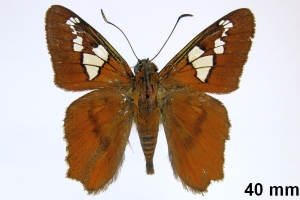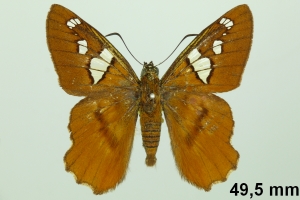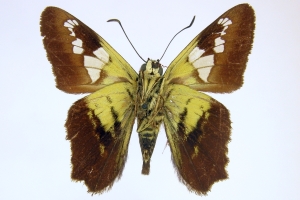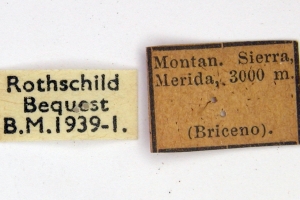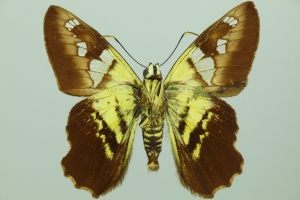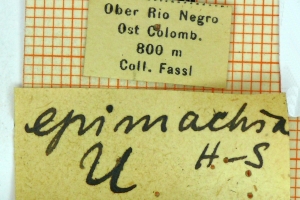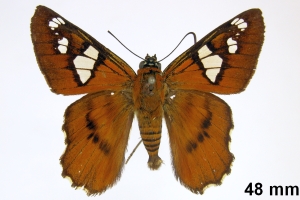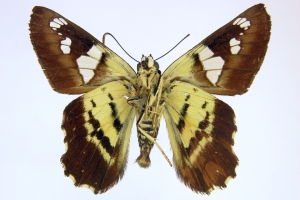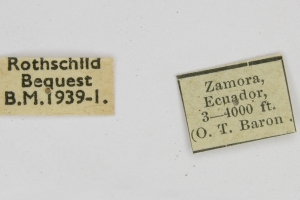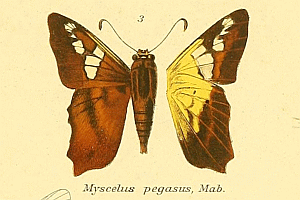2. Diagnose
2.1. Männchen
2.2. Weibchen
2.3. Erstbeschreibung
3. Weitere Informationen
3.1. Andere Kombinationen
- Myscelus pegasus Mabille, 1903 [Originalkombination]
3.2. Taxonomie
"The taxonomic status of this and Agara perissodora is questionable. The only known syntype of Myscelus perissodora is from Mexico: Veracruz (Misantla) and has the outer margin of the ventral hindwing very similar to that of A. pegasus: the discal band is not separated from the dark margin. Specimens of A. perissodora from Costa Rica have the outer margin of the ventral hindwing with the discal brown band separated from the outer dark margin. The genitalia of both taxa are similar. We have only examined a few specimens in collections and few localities are known for either species (misidentifications are possible)." Mielke, O. H. H., Brockmann, E. & C. G. C. Mielke (2022)
3.3. Faunistik
Nach Mielke, Brockmann & Mielke (2022) kommt die Art in Kolumbien, Ecuador, Venezuela und Französisch-Guayana vor.
Locus typicus: Französisch-Guayana.
(Autor: Michel Kettner)
3.4. Literatur
- Erstbeschreibung: Mabille, P. (1903-1904): Lepidopterea Rhopalocera Fam. Hesperidae. — In: Wytsman, P. (1903-1904): Genera Insectorum 17 (a-d): 1-210, pl. 1-4
3.5. Informationen auf anderen Websites (externe Links)
- [BOLD], dort unter Myscelus pegasus zu finden.
- [Global Biodiversity Information Facility], dort unter Myscelus pegasus zu finden.
- [Butterflies of America], dort unter Myscelus pegasus zu finden.




![Vorkommen in Kolumbien [Foto im Forum]](/res/img/flag/co.gif)
![Vorkommen in Venezuela [Mielke, Brockmann & Mielke (2022)]](/res/img/flag/ve.gif)
![Vorkommen in Französisch-Guayana [Locus typicus]](/res/img/flag/gf.gif)
![Vorkommen in Ecuador (Festland) [Mielke, Brockmann & Mielke (2022)]](/res/img/flag/ec.gif)
